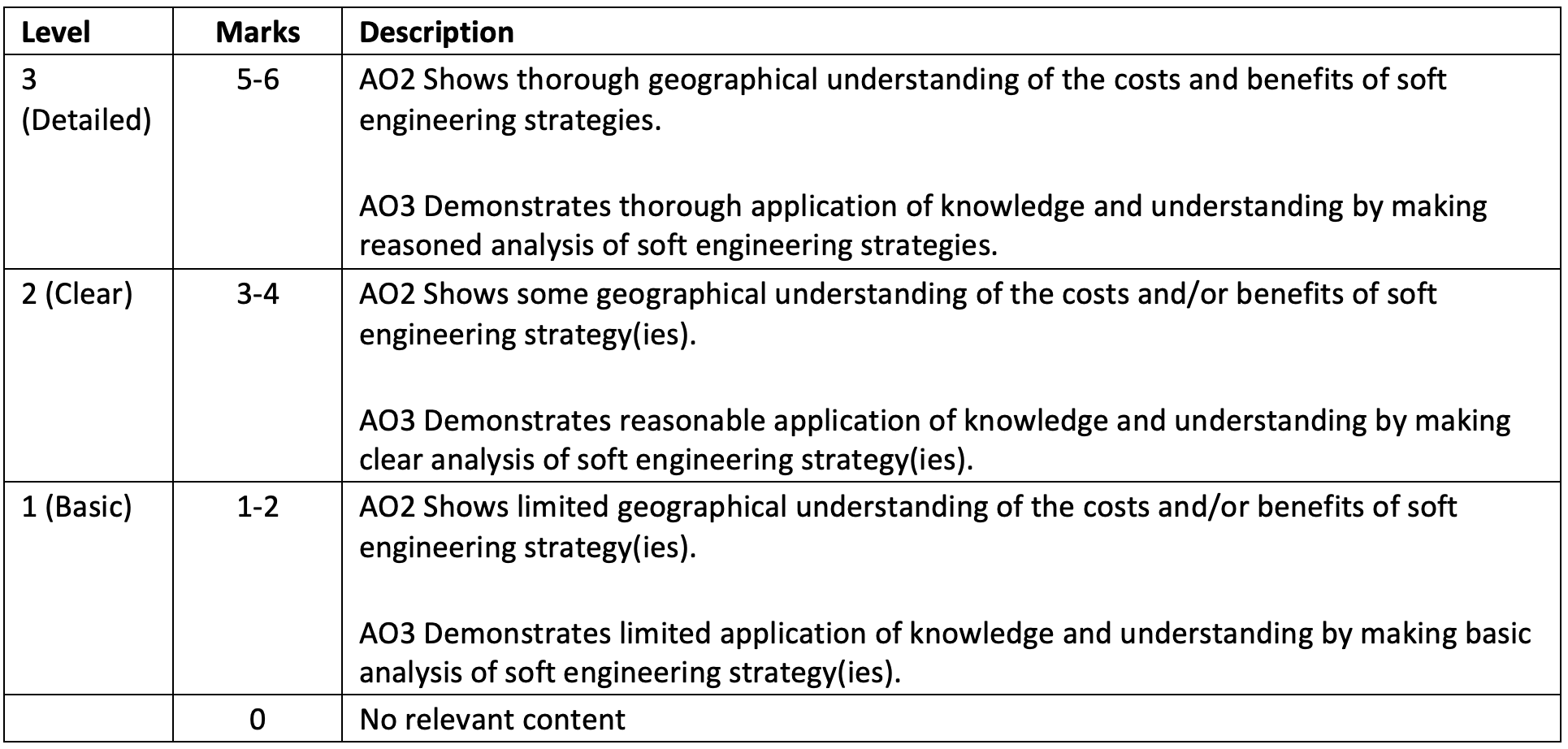You are here: AQA GCSE Geography PLCs > Coasts > C12 Example Answer
Discuss the costs and benefits of soft engineering strategies in protecting coastlines.
The command word in the questions is discuss. This means you need to present key points about the different strengths and weaknesses of soft engineering as a strategy for protecting coasts.
Example Answer
Beach nourishment replaces beach or cliff material removed by erosion or longshore drift. The main advantage is that beaches are a natural defence against erosion and coastal flooding. It usually looks natural and can improve the attractiveness of a stretch of coast. It creates a valuable amenity for tourism; it is a relatively cheap option and easy to maintain.
However, it does require constant maintenance to replace the beach material as it is washed away. This is particularly the case after winter storms. People may be prevented from using the beach for several weeks during maintenance. Costs up to £500 000 per 100 metres (but the cost can vary greatly depending on transport costs and quantity).
Beach reprofiling is the artificial re-shaping of a beach using existing beach material. For example, bulldozers may move shingle back up the beach after winter storms. The costs and benefits are similar to those for beach nourishment. The disruption caused by reprofiling may have negative impacts on beach habitats.
Dune regeneration is the artificial creation of new sand dunes or the restoration of existing dunes using strategies such as marram grass planting or fencing them off from the human impact. Dunes act as a physical barrier between the sea and the land. They absorb wave energy and water and protect the land from the sea. Most people consider this strategy natural and can produce an attractive amenity for tourists. They may also increase biodiversity, providing a greater range of natural habitats for plants, animals and birds. However, they can be easily damaged by storms, and it can be time-consuming to plant the grass and maintain the area/it can also deter tourists at this time. Costs £400- £2000 per 100 metres.
Soft engineering works with nature rather than against it, blends in with the environment and can improve it, e.g. adding sand to beaches, doesn’t interfere with processes elsewhere and affect other areas; is sustainable. Disadvantages of soft engineering – areas can just be left at the mercy of the sea, a more gentle intervention may not be effective, and people can lose homes and livelihoods.
AO2 – 3 marks
AO3 – 3 marks




